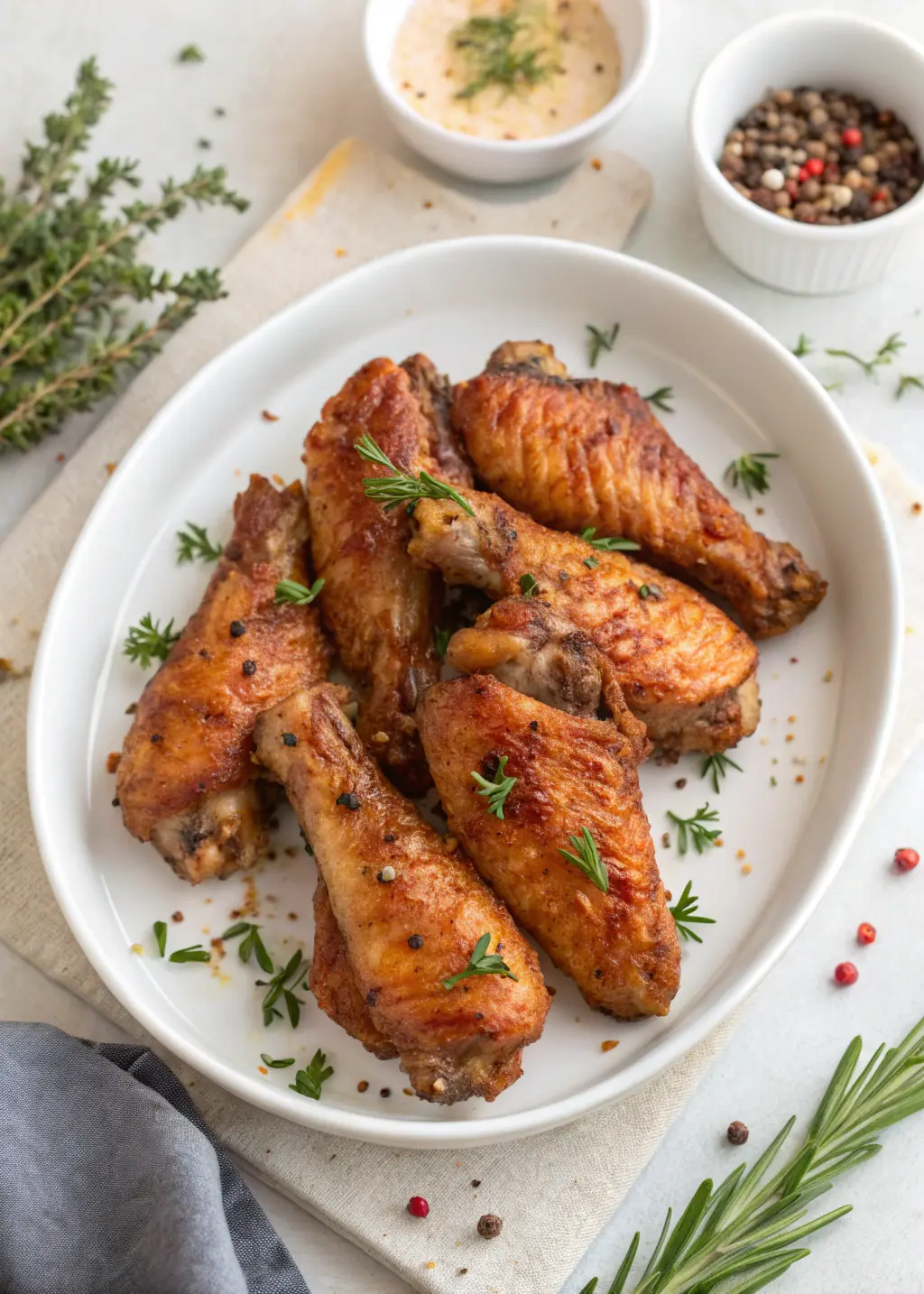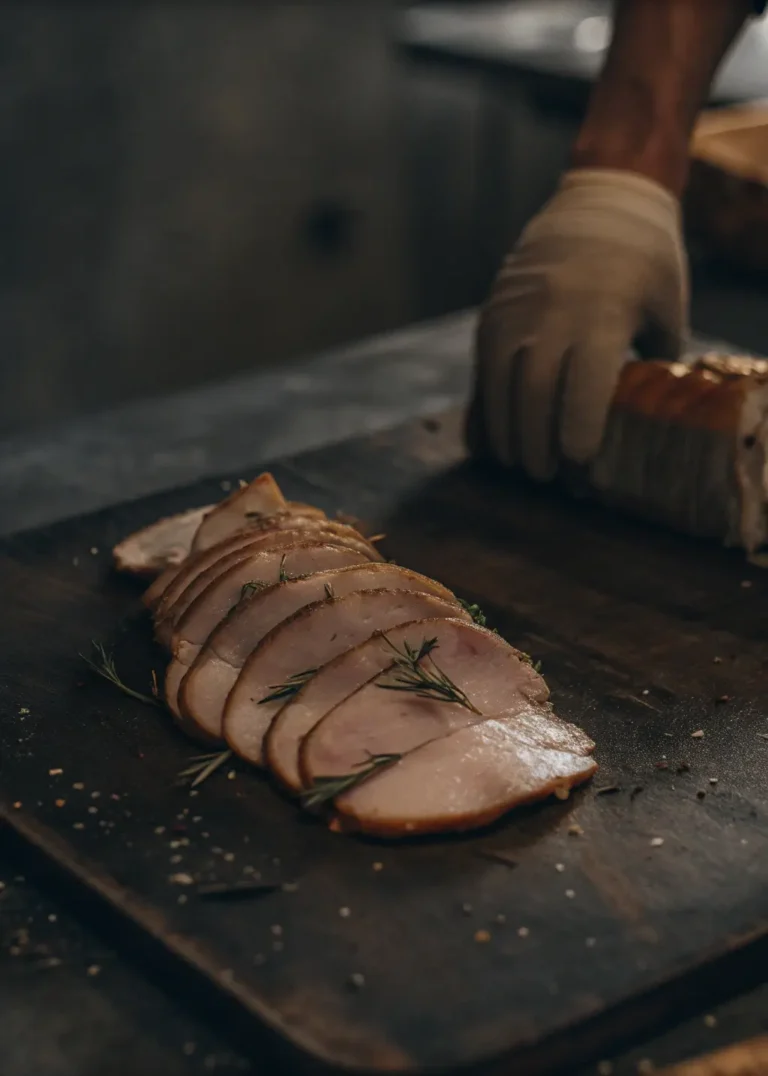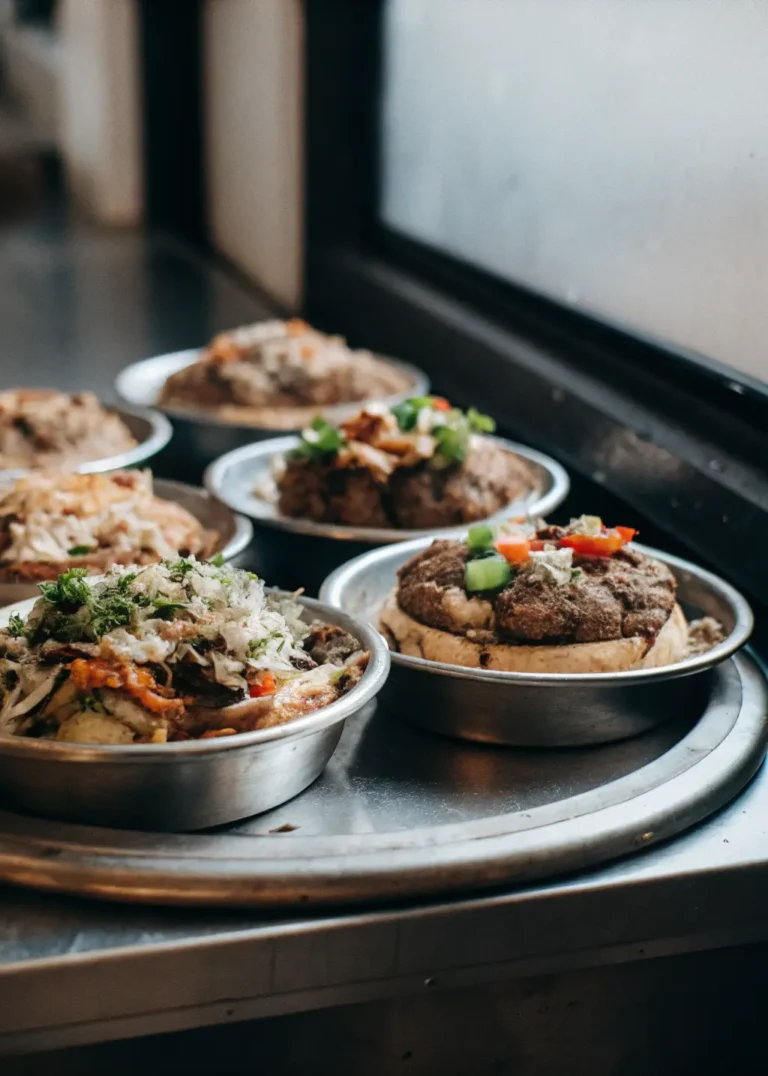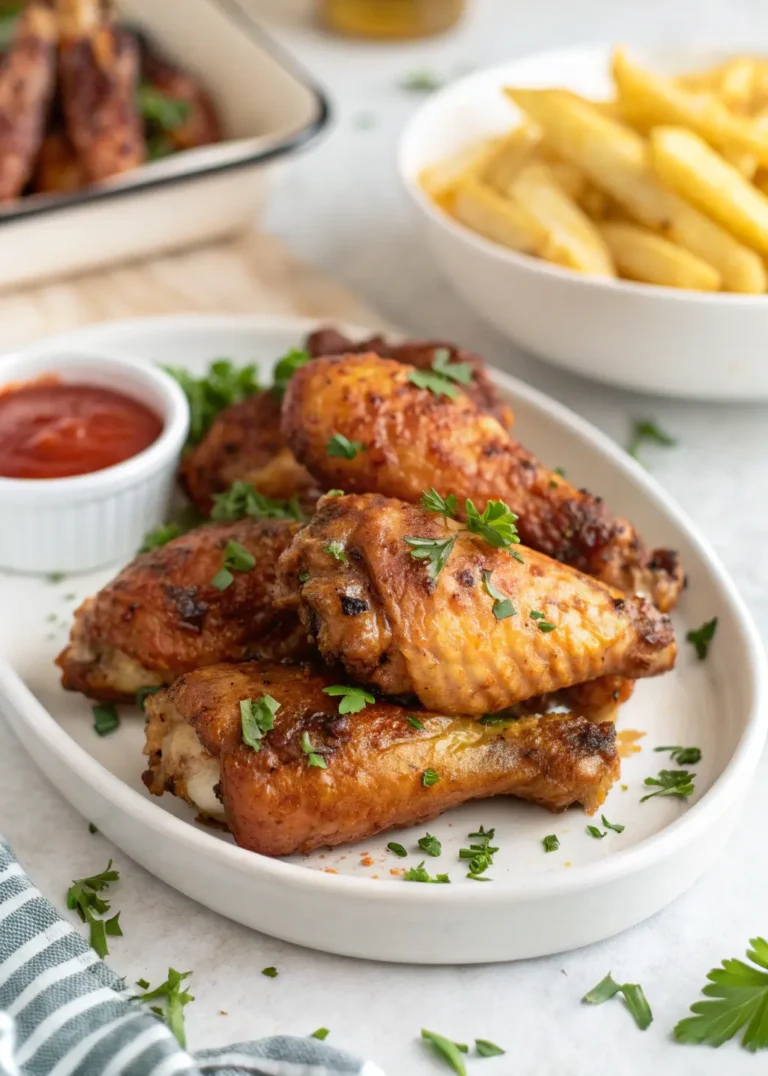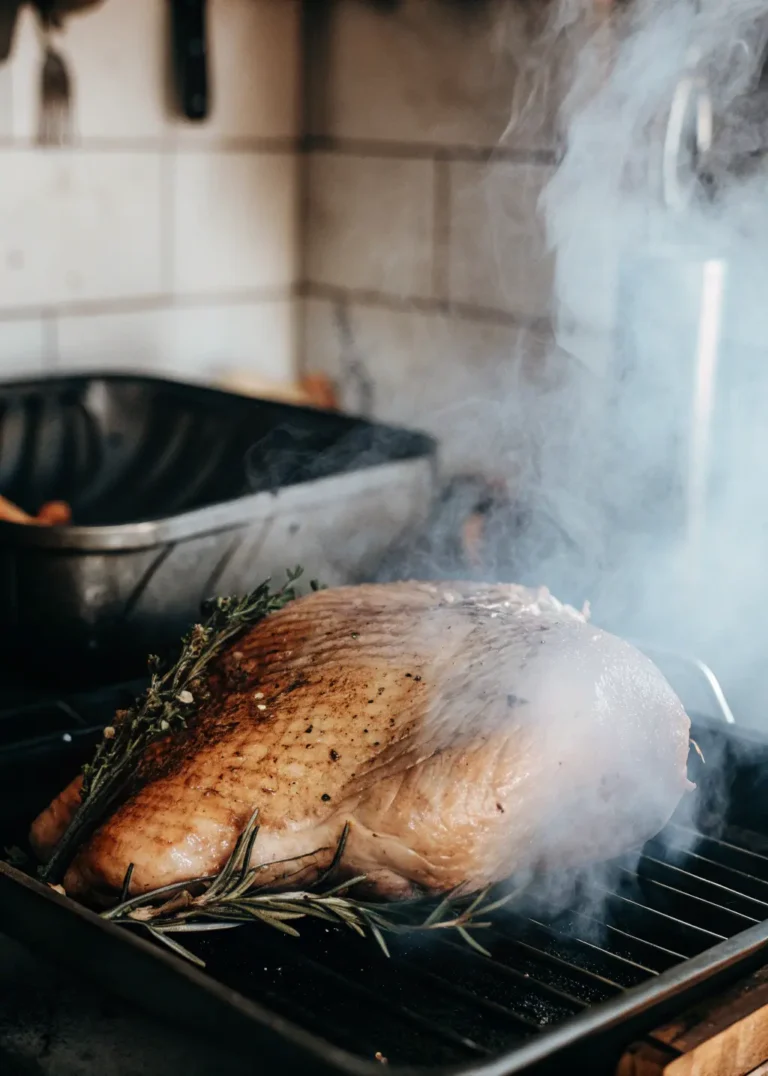Oven-Baked Turkey Wings: Easy and Flavorful Recipe for Any Occasion
Picture this: you walk into your kitchen after a long day, and the rich aroma of perfectly seasoned turkey wings fills the air. Your family gathers around the table, eyes lighting up as you present golden-brown wings that rival any restaurant dish. This isn’t just dinner – it’s a moment that transforms an ordinary evening into something memorable. Whether you’re hosting friends for game night or preparing a cozy family meal, turkey wings offer that perfect blend of comfort and sophistication that makes every bite worth savoring.
Table of contents

Why Turkey Wings Deserve a Place on Your Table
The Underrated Protein That Packs Big Flavor
You’ve probably walked past turkey wings countless times in the grocery store, dismissing them for more familiar cuts. However, these overlooked gems deliver exceptional value that smart home cooks have discovered. Turkey wings cost significantly less than whole turkeys or premium cuts, yet they provide the same rich, satisfying flavor that makes holiday meals so special.
The dark meat in turkey wings contains more natural oils and connective tissue than breast meat, which translates to deeper flavor and juicier results when cooked properly. Unlike chicken wings, turkey wings offer substantial meat portions that satisfy hearty appetites while maintaining that finger-food appeal everyone loves.
From a nutritional standpoint, turkey wings pack impressive protein content – approximately 25 grams per serving – along with essential B vitamins, phosphorus, and selenium. This makes them an excellent choice for anyone looking to increase their protein intake without breaking the budget.
Essential Ingredients for Perfect Oven-Baked Turkey Wings
Main Ingredients Table
| Ingredient | Quantity | Purpose |
|---|---|---|
| Turkey Wings | 4-6 large wings (3-4 lbs) | Main protein |
| Olive Oil | 3 tablespoons | Moisture and browning |
| Salt | 2 teaspoons | Base seasoning |
| Black Pepper | 1 teaspoon | Heat and flavor |
| Garlic Powder | 2 teaspoons | Aromatic base |
| Onion Powder | 2 teaspoons | Depth of flavor |
| Paprika | 2 teaspoons | Color and mild heat |
| Dried Thyme | 1 teaspoon | Herbal note |
| Dried Rosemary | 1 teaspoon | Earthy aroma |
Optional Flavor Enhancers
| Enhancement | Quantity | When to Use |
|---|---|---|
| Brown Sugar | 1 tablespoon | For caramelized finish |
| Soy Sauce | 2 tablespoons | Asian-inspired flavor |
| Hot Sauce | 1-2 teaspoons | Spicy kick |
| Lemon Juice | 2 tablespoons | Brightness and acidity |
| Fresh Herbs | As desired | Garnish and fresh flavor |
The beauty of turkey wings lies in their ability to absorb flavors beautifully. Start with high-quality olive oil as your base – it helps seasonings adhere while promoting that coveted golden-brown exterior. Your spice blend should balance earthy herbs with aromatic powders, creating layers of flavor that penetrate deep into the meat.
Step-by-Step Turkey Wings Recipe Guide
Preparation Phase
Your success begins long before the oven heats up. Start by ensuring your turkey wings are completely thawed – this typically requires 24-48 hours in the refrigerator for frozen wings. Never attempt to cook frozen wings directly, as this leads to uneven cooking and potential food safety issues.
Once thawed, pat each wing completely dry with paper towels. Moisture on the surface prevents proper browning and crispy skin formation. Take time to examine each wing, removing any remaining feathers or debris that may have been missed during processing.
Seasoning Strategy:
- Create your dry rub by combining all spices in a small bowl
- Drizzle wings with olive oil, ensuring even coverage
- Apply seasoning generously, working it into every crevice
- Allow wings to marinate for minimum 2 hours, preferably overnight
The marination process allows flavors to penetrate beyond the surface, creating depth that distinguishes exceptional turkey wings from merely good ones. Overnight marination produces the most pronounced flavor development.
Cooking Process
Oven Preparation: Preheat your oven to 375°F (190°C) and position the rack in the center position. This temperature provides the ideal balance between cooking the meat thoroughly and achieving crispy skin. Line a large baking sheet with parchment paper or aluminum foil for easy cleanup.
Baking Timeline:
- Initial High-Heat Phase (First 25 minutes):
- Place wings skin-side up on prepared baking sheet
- Ensure adequate spacing between wings for air circulation
- Avoid opening oven door during this critical browning period
- Continued Cooking (Next 35-50 minutes):
- Check wings at 60-minute mark for doneness
- Internal temperature should reach 165°F (74°C)
- Baste with accumulated pan juices if desired
- Final Rest Period:
- Remove wings from oven when fully cooked
- Allow 10-minute rest before serving
- This resting period ensures juices redistribute throughout the meat
Visual Cues for Perfect Doneness:
- Skin appears golden-brown and crispy
- Juices run clear when pierced with a fork
- Meat pulls away easily from bone joints
- No pink coloration remains near the bone
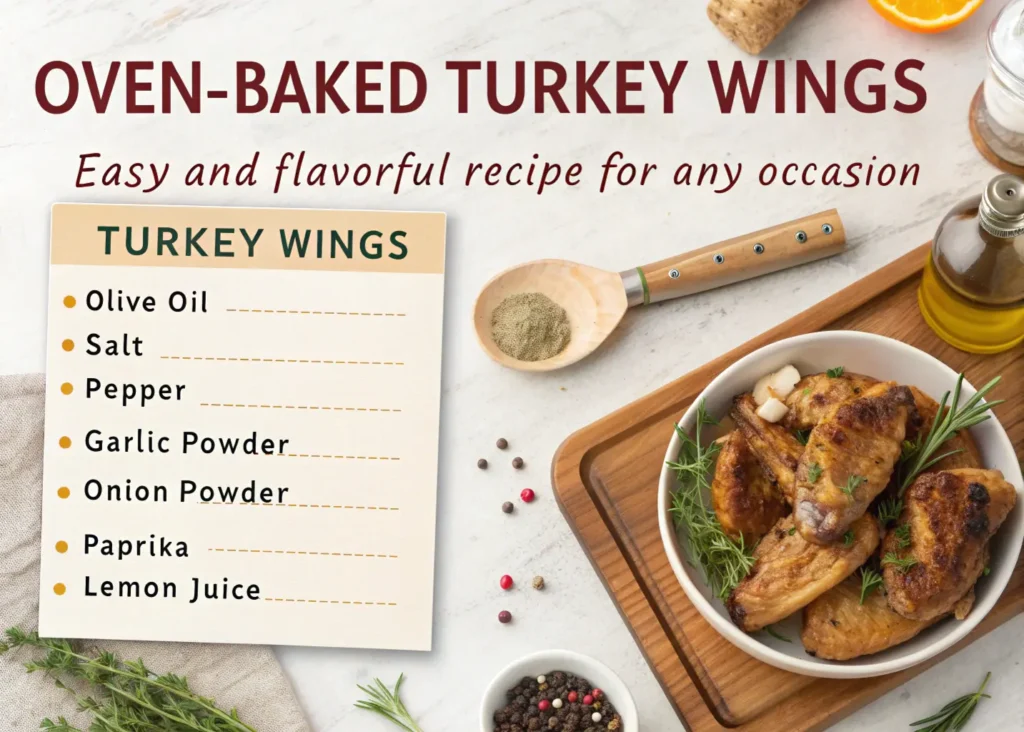
Pro Tips for Perfectly Crispy Turkey Wings
Achieving Golden-Brown Perfection
Your quest for restaurant-quality turkey wings depends on mastering several key techniques that separate amateur results from professional outcomes.
Pre-cooking Preparation Tricks:
- Score the skin in crosshatch patterns to allow better seasoning penetration
- Air-dry seasoned wings in the refrigerator for 30 minutes before cooking
- Bring wings to room temperature 30 minutes before baking
During Cooking Optimizations:
- Space wings at least 2 inches apart on baking sheet
- Use convection setting if available (reduce temperature by 25°F)
- Rotate pan halfway through cooking for even browning
- Resist the urge to flip wings unnecessarily
Common Mistakes to Avoid
Even experienced cooks sometimes fall into traps that compromise their turkey wing results. Here are the most frequent pitfalls and their solutions:
Overcrowding the Pan: When wings touch each other, steam builds up and prevents proper browning. Use multiple pans if necessary to maintain adequate spacing.
Skipping the Resting Period: Cutting into wings immediately after cooking causes juices to escape, resulting in dry meat. Always allow at least 10 minutes of rest time.
Frequent Oven Door Opening: Each time you open the oven door, temperature drops significantly, extending cooking time and affecting texture.
Ignoring Internal Temperature: Visual cues help, but only a meat thermometer guarantees food safety and optimal doneness.
Flavor Variations and Seasoning Ideas
International Flavor Profiles
The versatility of turkey wings allows you to explore diverse culinary traditions while maintaining the same basic cooking method.
Mediterranean Style: Transform your wings with oregano, basil, garlic powder, and lemon zest. This combination creates bright, herbaceous flavors that pair beautifully with Greek-style sides like roasted vegetables and rice pilaf.
Asian-Inspired: Combine soy sauce, fresh ginger, five-spice powder, and a touch of honey for wings that deliver umami richness with subtle sweetness. Serve alongside steamed rice and stir-fried vegetables for a complete meal.
Southern Comfort: Embrace bold flavors with Cajun seasoning, brown sugar, and smoked paprika. This combination creates wings with a perfect balance of heat, sweetness, and smokiness that embodies Southern cooking traditions.
Sauce and Glaze Options
Popular Combinations:
- Honey Mustard Glaze: Mix equal parts honey and Dijon mustard with a splash of apple cider vinegar
- BBQ Sauce Variations: Apply your favorite barbecue sauce during the last 15 minutes of cooking
- Buffalo Wing Adaptation: Toss cooked wings in buffalo sauce mixed with melted butter
- Teriyaki Glaze: Brush with teriyaki sauce and sprinkle with sesame seeds
Serving Suggestions and Meal Planning
Perfect Side Dish Pairings
Your turkey wings deserve accompaniments that complement their rich flavor without competing for attention.
Starch Options:
- Garlic mashed potatoes provide creamy comfort that balances the wings’ robust seasoning
- Wild rice pilaf adds nutty complexity and visual appeal
- Roasted sweet potatoes offer natural sweetness that harmonizes with savory spices
- Cornbread stuffing brings Southern charm to your meal presentation
Vegetable Accompaniments:
- Green beans almondine contribute fresh crunch and elegant presentation
- Roasted Brussels sprouts with bacon bits add sophisticated flavors
- Honey-glazed carrots provide colorful sweetness
- Sautéed collard greens deliver traditional soul food authenticity
Occasion-Based Serving Ideas
Family Dinners: Present wings family-style on a large platter surrounded by classic comfort food sides. This approach encourages sharing and creates a welcoming atmosphere.
Holiday Gatherings: Elevate presentation with individual plates, garnished with fresh herbs and artfully arranged sides. Consider smaller portions as part of a larger feast.
Meal Prep Applications: Cook wings in larger batches and portion into containers with complementary sides for convenient weekday meals.
Game Day Entertaining: Serve wings with various dipping sauces and finger-friendly sides that guests can enjoy while watching sports.
Storage and Leftover Magic
Proper Storage Techniques
Maximizing your turkey wing investment requires understanding proper storage methods that maintain quality and ensure food safety.
Refrigeration Guidelines:
- Cool wings to room temperature before refrigerating
- Store in airtight containers for maximum 3-4 days
- Separate meat from bones for more efficient storage
- Label containers with preparation dates
Freezing Methods:
- Wrap individual wings in aluminum foil before placing in freezer bags
- Remove as much air as possible to prevent freezer burn
- Freeze for up to 3 months for best quality
- Thaw completely in refrigerator before reheating
Creative Leftover Recipes
Don’t let leftover turkey wings go to waste – they’re perfect foundations for entirely new meals.
Transformation Ideas:
- Turkey Wing Soup: Remove meat from bones and simmer with vegetables and broth for hearty soup
- Pulled Turkey Sandwiches: Shred meat and mix with barbecue sauce for satisfying sandwiches
- Turkey Wing Salad: Dice cooled meat and incorporate into green salads or pasta salads
- Casserole Additions: Add chunks of turkey wing meat to your favorite casserole recipes
Nutritional Benefits and Health Considerations
Turkey Wings Nutrition Profile
Understanding the nutritional value of turkey wings helps you make informed dietary choices while enjoying delicious meals.
Health Benefits: Turkey wings provide approximately 25 grams of high-quality protein per serving, making them excellent for muscle maintenance and satiety. They contain essential amino acids your body cannot produce independently, supporting various physiological functions.
The B-vitamin content in turkey wings supports energy metabolism and nervous system function. Phosphorus contributes to bone health, while selenium acts as an antioxidant, protecting cells from oxidative damage.
Dietary Adaptations: For those monitoring sodium intake, reduce added salt and rely more heavily on herb and spice combinations for flavor. Keto dieters can enjoy turkey wings freely, as they’re naturally low in carbohydrates while providing substantial protein and healthy fats.
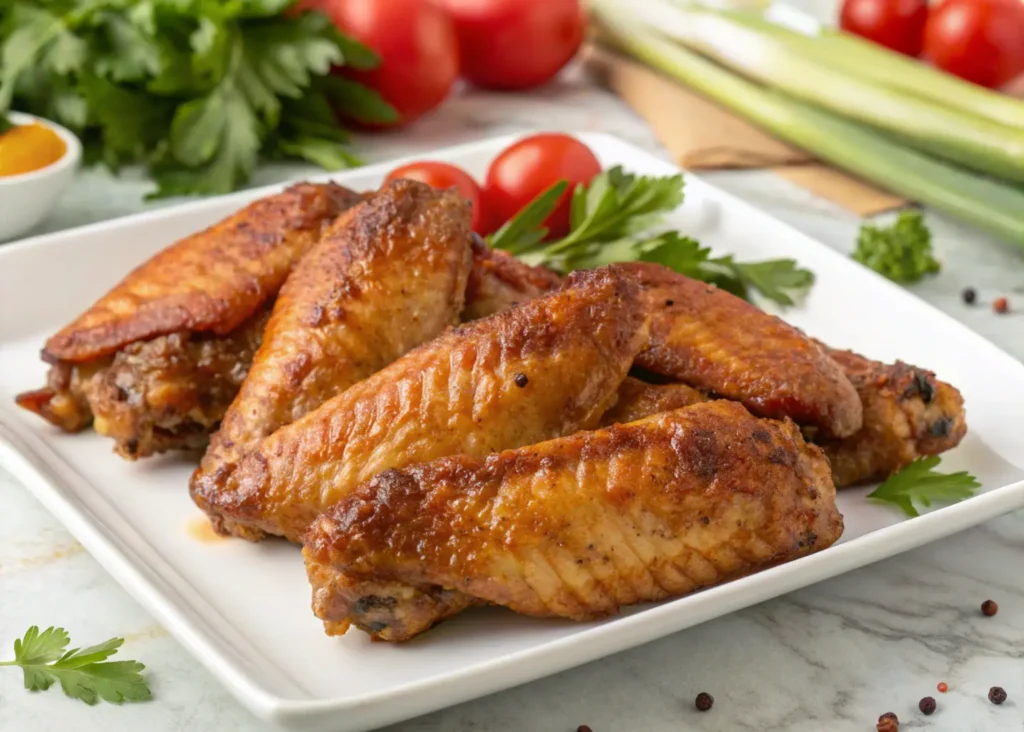
Frequently Asked Questions About Turkey Wings
Q: How long should turkey wings bake in the oven at 375°F?
A: Turkey wings typically require 60-75 minutes at 375°F, depending on size. Always verify that internal temperature reaches 165°F for food safety.
Q: Can you cook frozen turkey wings in the oven?
A: While possible, it’s recommended to thaw turkey wings completely before baking for even cooking and better seasoning absorption. Frozen wings require approximately 50% longer cooking time.
Q: What’s the best way to keep turkey wings moist while baking?
A: To keep turkey wings moist, avoid overcooking, baste occasionally with pan juices, and let them rest for 10 minutes after cooking before serving.
Q: Are turkey wings healthier than chicken wings?
A: Turkey wings are generally leaner than chicken wings and provide more protein per serving, making them a healthier alternative for those watching their fat intake.
Q: How do you know when turkey wings are fully cooked?
A: Turkey wings are done when the internal temperature reaches 165°F (74°C) at the thickest part, the juices run clear, and the meat easily pulls away from the bone.
Q: Can turkey wings be prepared ahead of time?
A: Yes, turkey wings can be seasoned and marinated up to 24 hours in advance. They can also be fully cooked and reheated, though fresh preparation yields the best texture.
Conclusion
Mastering oven-baked turkey wings transforms your cooking repertoire while delivering exceptional value and flavor to your table. These versatile, budget-friendly cuts deserve recognition beyond holiday celebrations, offering year-round opportunities to create memorable meals that satisfy both family and guests.
The techniques and tips outlined in this guide provide everything you need to achieve professional-quality results in your home kitchen. Remember that cooking is as much about confidence as it is about following recipes – trust your instincts, experiment with different flavor combinations, and don’t be afraid to make adjustments based on your preferences.
Your journey toward turkey wing mastery begins with your next grocery shopping trip. Pick up some wings, gather your seasonings, and start creating those unforgettable moments that happen when exceptional food brings people together around your table.
Ready to impress your family and friends with restaurant-quality turkey wings? Share your cooking results and favorite seasoning combinations in the comments below – we’d love to hear about your culinary adventures and help you troubleshoot any challenges you encounter along the way!
Have you given our recipe a try?
There are no reviews yet. Be the first one to write one.

